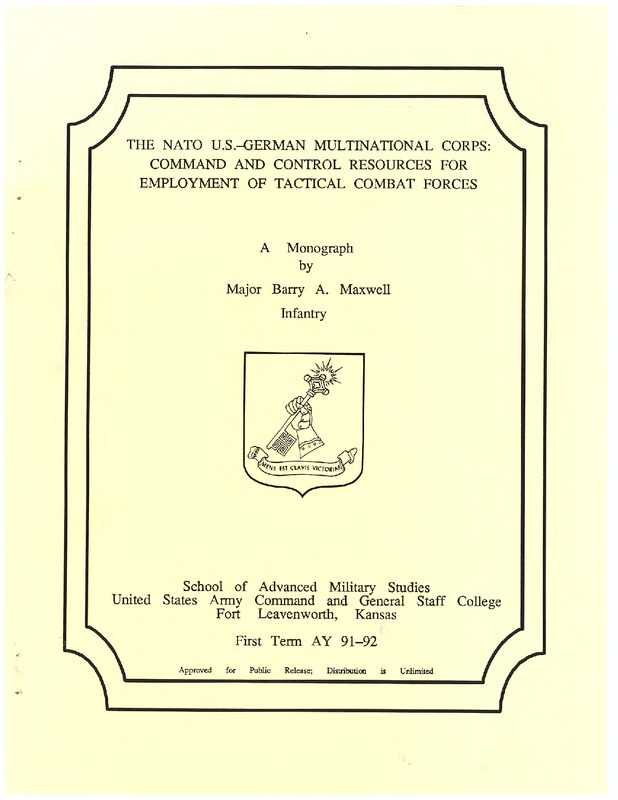The NATO U.S.-German Multinational Corps: Command and Control Resources For Employment of Tactical Combat Forces
Item
-
Description or Abstract
-
The multinational corps concept Is relevant to NATO as a way of dealing with the changes brought about by the unification of Germany, the impending withdrawal of the Soviet Union's military forces from Eastern Europe and budget constraints in NATO nations. These changes are bringing about reductions In forces, perceptions of a decreasing threat and a need to change the historic national corps positioning and employment concepts. A U.S.-German multinational corps Is one structure being examined for use in this new situation, and command and control in such a corps will be complicated due to Internal differences in language, doctrine and force structure. This monograph answers the question: What command and control resources must be provided for in the tactical employment of combat forces In a future NATO U.S.-German multinational corps? The answer is sought by examining the conditions that make such a corps useful and by defining command and control In a multinational environment. Next, the study contrasts command and control In a pure U.S. corps with a U.S.-German multinational corps, by examining how the command and control functions of planning, directing, controlling and coordinating are affected by differences In the resources of communications systems, facilities, procedures and personnel. By analyzing these differences. this study identifies implications for c2 resources that must be provided for the multinational corps to operate effectively. Despite years of cooperation and great effort toward standardization, many command and control differences exist between the two armies and significant resources will be needed to bridge those differences. Secure communications and transmission of data and graphics are a problem; command posts operate differently; there is considerable divergence in doctrine and procedure, and the German division G3 staff section is much smaller than that of a U.S. division. None of these diversities are insurmountable if the necessary time, effort and money are provided, especially for manning, training and equipping liaison elements. If such resources are not provided, the multinational corps will be left to operate at a much lower level of effectiveness than the purely national corps.
-
Year
-
1991
-
Rights Holder
-
U.S. Government
-
Title
-
The NATO U.S.-German Multinational Corps: Command and Control Resources For Employment of Tactical Combat Forces
-
Type
-
book
 Public domain
Public domain


